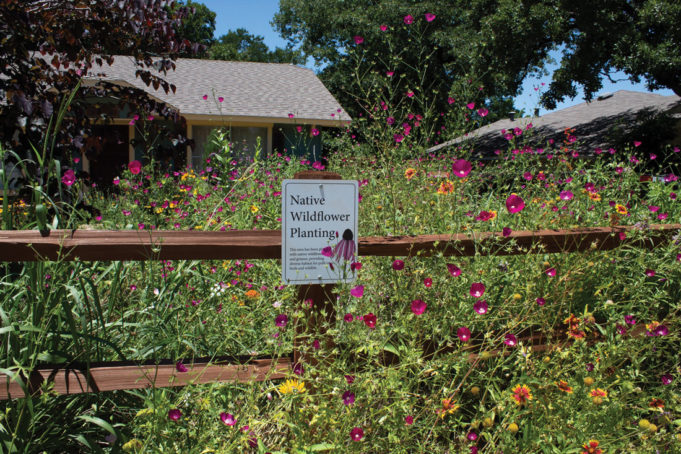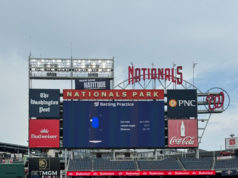As North Texas thermometers creep toward the century mark, a time-honored summer tradition draws closer. Texans will soon be turning on water spigots, unraveling hoses, and dousing lawns in torrents of potable water. While other countries and many parts of the United States struggle to source and maintain clean water, Fort Worthians are literally making it rain with the Earth’s most important natural resource.
When Margaret Allyson moved from New Mexico to Fort Worth in 1972, she was surprised to see how casually North Texans treated water usage.
“I had lived in an adobe home,” she said. “I taught my children to not let their water run when they brushed their teeth. I would see the sprinklers watering the street here. It’s hard to see water being wasted.”
With the help of Michael Greathouse, owner of GreatWater Irrigation, Allyson had her sprinkler adjusted to use less water. Greathouse also built a corner rock garden and a stone walkway that were filled with native plants and flowers.
“If I were younger, I would destroy all the St. Augustine grass in my yard and have wildflowers and native plants,” Allyson said.
Steve Huddleston, senior horticulturist at the Fort Worth Botanic Garden, says a growing number of North Texans are beginning to really dig the idea of using drought-resistant plants. The movement is often referred to as xeriscaping, from the Greek word xeros for “dry.”
Huddleston, author of Easy Gardens for North Central Texas, teaches landscape design courses through a continuing education program at TCU. Huddleston says that environmentally friendly lawns don’t have to look like rock gardens. Native plants and grasses do well in North Texas’ sometimes arid climate, he said, but he often recommends plants, trees, and shrubs that come from all parts of the globe as long as they use minimal amounts of water. Crepe myrtles are one such example. The plant hails from China but thrives in Texas heat. Huddleston’s first piece of advice for gardeners who wish to cut down on water waste is to find ways to shrink the footprint of wasteful grasses like St. Augustine.
“St. Augustine is the most water-guzzling grass we have,” he said. “I had it in my other house. I managed to water it once a week, maybe twice. Many people overwater it. There are other grasses that consume less water.”
Two alternative types of grasses that use less water include Buffalo grass or Zoysia. Short of replacing St. Augustine, Huddleston recommends building gardens or rock walkways as two effective means to reduce a lawn’s footprint and thereby reduce water usage. For large shrubs and small trees, Huddleston recommends planting Texas mountain laurel, turk’s cap, and agave. Huddleston recommended several flowers that add beautiful aesthetics and thrive in Texas heat.
“Autumn sage (Salvia greggii) is a wonderful plant that grows around two-and-a-half-feet tall,” he said. “Autumn sage blooms March through November. There are several good varieties of red yucca. Zexmenia is a wonderful native plant that blooms with orange flowers all summer long.”
Huddleston converted his front lawn using drought-resistant plants over the course of three days. After using herbicide to kill the St. Augustine, he tilled the dead grass into the soil and topped the lawn with expanded shale (light-colored clay aggregate) and aged compost, a soil rich in organic material that retains water well. He then placed garden beds, stepping stones, and multiple varieties of native and drought-resistant flowers and plants throughout his lawn.
For sustainable gardening advice, Huddleston recommends contacting Weston Gardens (8101 Anglin Dr, 817-572-0549), Idlewild Botanical (5111 W Arkansas Ln, Arlington, 817-678-8448), and Stuart Nursery (2317 Fort Worth Hwy, Weatherford, 817-596-0003), although any garden nursery should be equipped to recommend native or drought-resistant plants and trees.
“I see interest growing” in sustainable gardening, he said. “Many people are aware of the need to conserve water. There are more people who are familiar with xeriscaping. Some still think it involves zero plant material. It’s a matter of picking plants that survive on less water. You can have a beautiful and very colorful landscape that survives on less water. You just have to choose the right plants.”












